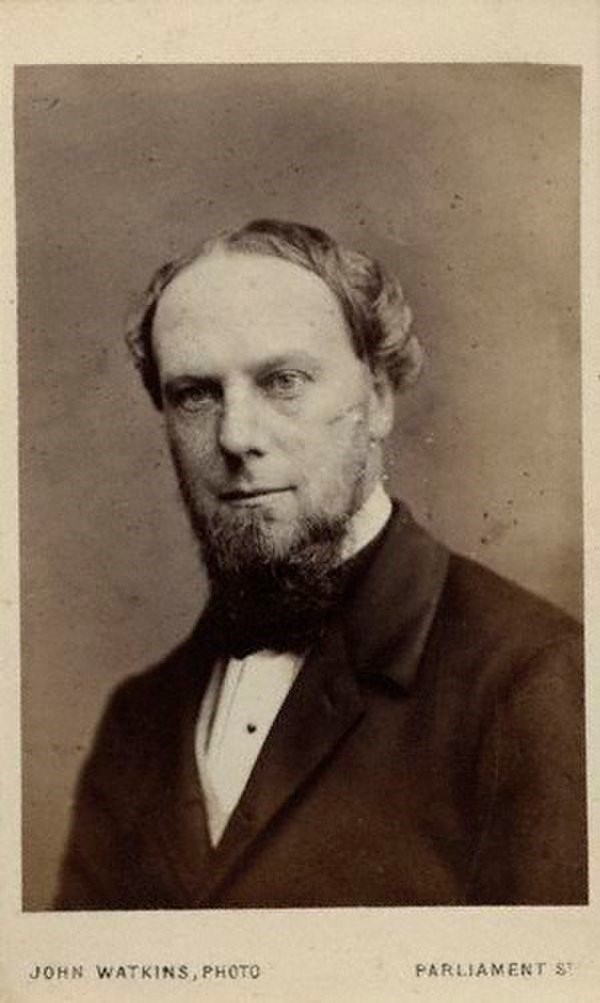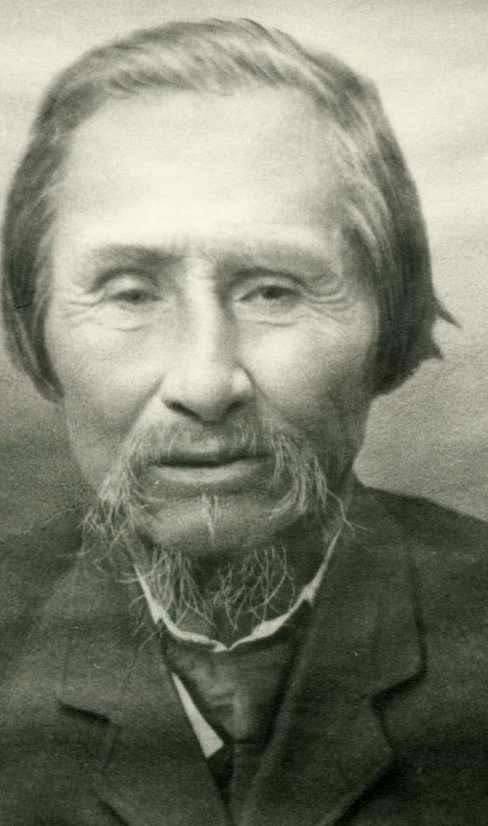One has only to read the headlines to realize the outstanding issue of Indigenous title continues to trouble British Columbia.
Native protest is nothing new. It’s been an established fact in this province for the last 160 years – and during the 19th century, extended up to the very real threat of warfare.
Governor James Douglas’ preoccupation was the ever-constant threat of native warfare on fledgling non-native settlements. This was the imperial government’s central preoccupation, too. Herman Merivale, the permanent undersecretary of state for the colonies, wrote (while professor of Political Economy at Oxford) that:
"The history of the European settlements in America, Africa, and Australia presents everywhere the same general features – a wide and sweeping destruction of native races by the uncontrolled violence of individuals, if not of colonial authorities, followed by tardy attempts on the part of governments to repair the acknowledged crime."

The threat of native-newcomer violence and warfare is a recurrent theme found throughout the colonial record for both the colonies of Vancouver Island and British Columbia, and south of the 49th parallel in Washington Territory.
As such, Douglas – either in his capacity as Chief Factor of the Hudson’s Bay Company (HBC) Columbia Department or as colonial governor – was always careful to enact policies that ensured peaceful relations.
These policies, predicated on earlier and successful fur trade/HBC practices, largely stemmed violent conflict until the critical and catastrophic year of 1858, when the Crown Colony of British Columbia was formed.
Douglas had repeatedly warned the imperial government that violent conflict would likely occur with the expansion of the California mining frontier into British territory. Especially so, as the 49th parallel remained unmarked and, as the Duke of Newcastle considered, “an imaginary boundary” that neither defined the Indigenous world, nor the violent warfare directed largely from California.
Douglas had witnessed the violent confrontations increasingly occurring in Washington territory.
In the summer of 1858, as Douglas had predicted, wholesale conflict erupted along the Fraser and Thompson river corridors due to the huge influx of non-native gold seekers. The Nlaka’pamux (Thompson), Okanagan, and Secwepemc (Shuswap) peoples were engaged in this conflict. Ethnographer James Teit recounted some 40 years later the dire circumstances of this war and the native response to it:
Hundreds of warriors from all parts of the upper Thompson country had assembled at Lytton with the intention of blocking the progress of the whites beyond that point [he stated], and, if possible, of driving them back down the river. The Okanagan had sent word, promising aid, and it was expected that the Shuswap would also render help. In fact the Bonaparte, Savona, and Kamloops bands had initiated their desire to assist if war was declared.
Though the Fraser War ended, Douglas remained concerned about the future possibility of “having the Native Indian Tribes arrayed in vindictive warfare against the white settlements,” and cautioned the importance of maintaining peaceful relations:
As friends and Allies the native races are capable of rendering the most valuable assistance to the Colony while their enmity would entail on the settlers, a greater amount of wretchedness and physical suffering, and more seriously retard the growth and material development of the Colony, than any other calamity to which, in the ordinary course of events, it would be exposed.
Douglas understood this threat well. Without the active participation of native peoples in the fur trade, HBC operations on the Pacific would also have been severely hampered – if not entirely impossible.
While the gold rush of 1858 seemingly changed everything – having eclipsed the fur trade – the new economy was still ultimately dependent in large measure on the involvement of Indigenous peoples.
“Take away the Indians from New Westminster, Lillooet, Lytton, Clinton,” said MLA Thomas B. Humphreys some 12 years later, “and these towns would be nowhere…Take away this trade and the towns must sink.
“I say, send them out to reservations and you destroy trade, and if the Indians are driven out we had all best go too.”
Prior to the 1858 gold rush, Douglas’ repeated warnings to the imperial government about native-newcomer conflict were recorded in colonial despatches that, in many instances, were printed for British Parliament. These warnings were picked up by the influential Aborigines Protection Society (APS) – borne of William Wilberforce’s anti-slavery movement.
The APS expressed great concern to the Colonial Office that the exterminationist campaigns against Indigenous peoples in California was about to be repeated. They urged immediate action.
As such, Lord Lytton demanded that all necessary steps be taken to protect the Native peoples of British Columbia and sent the APS letter to Douglas on 2 September 2nd 1858:
It appears, from all the sources of information open to us, that unless wise and vigorous measures be adopted by the representatives of the British Government in that Colony, the present danger of a collision between the setters and the natives will soon ripen into a deadly war of races, which could not fail to terminate, as similar wars have done on the American continent, in the extermination of the red man.
The danger of collision springs from various causes. In the first place, it would appear from Governor Douglas’s Despatches, as well as from more recent accounts, that the natives generally entertain ineradicable feelings of hostility towards the Americans, who are now pouring into Fraser and Thompson Rivers by thousands, and who will probably value Indian life there as cheaply as they have, unfortunately, done in California.
As such, the APS and British policy sought to stem the violent tide coming from the California mining frontier and encouraged “some guarantee that the promised equality of the races should be realized…and instead of obstructing the work of colonization they [Indigenous peoples] might be made useful agents in peopling the wilderness with prosperous and civilized communities, of which they one day might form a part.”
The APS letter sent by Lytton to Douglas provided the new governor with the essential spirit of the native protection policy. Indigenous peoples were to be treated as equals, and from the imperial perspective, the method was to ensure land reserves were set aside and protected. These Reserves were for the express purpose of forestalling conflict, a safe refuge in which education could commence and prepare Native peoples for entry into the “civilized life.”
From our modern perspective, the policies that had Liberal humanitarianism as their foundation may appear Eurocentric and self-justifying. But they nevertheless were a concerted attempt to halt the exterminationist practices found throughout the world in previous centuries.

Even after the Fraser War, Douglas continued to worry about more native-newcomer violence. In 1860, he toured the Interior, and met with the assembled chiefs at Rock Creek to determine what grievances they might have that could “induce them to make reprisals on the white settlers.”
The governor discovered:
There was one subject which especially pre-occupied their minds… namely the abject condition to which the cognate Native Tribes of Oregon have been reduced by the American system of removing whole Tribes from their native homes into distant reserves where they are compelled to stay, and denied the enjoyment of that natural freedom and liberty of action without which existence becomes intolerable.
Douglas assured them relocation from traditional lands was not B.C.’s policy – though he had initially agreed with Lord Lytton as to its possibility.
In a draft reply, Lytton pondered whether “the desirable thing would be to remove them, by argument, agreement, & reasonable terms from the [gold] Diggings most thronged to by the whites.”
Lytton’s inspiration clearly came from the work of Sir George Grey, Governor of the Cape Colony in South Africa. Referring to Grey’s work as a model, Lytton stated to Douglas:
“Sir George Grey has thus at the Cape been recently enabled to locate the Kaffirs [derog. Black Africans] in villages, and from that measure, if succeeding Governors carry out, with judgment and good fortune, the designs originated in the thoughtful policy of that vigorous and accomplished Governor, I trust that the posterity of those long barbarous populations may date their entrance into the pale of civilized life.”
Grey’s relocation of Black Africans, of course, was the basis for the Apartheid system in South Africa.
In my opinion, Douglas – while seeming to have agreed initially with Lytton – wisely chose not to institute a similar policy realizing that to curb the “freedom and liberty of movement” of their Native partners was both morally wrong and would have precipitated further and greater conflict.
Today, we have a modern Treaty process that has seemingly stalled, and an ever-increasing number of Indigenous claims before the courts where the expense of litigation continues to rise astronomically.
Surely this 160-year old stalemate demands a comprehensive and committed political solution?
This stalemate has become all too stale for those who have waited generations, but also for the whole province confronting economic uncertainty.
While Governor Douglas kept the peace, future provincial and federal governments have continued to grapple with the “Indian land question” – the unresolved issue of Indigenous title – and the likelihood of future blockades to come.
A fifth-generation British Columbian, Daniel Marshall is an author, professor, curator, documentarian, and researcher focusing on British Columbia’s relatively untold but rich history. He is a recognized leader and award-winning researcher on historic Native-Newcomer relations, and their evolution and implications on Aboriginal rights today.
His award-winning documentary, Canyon War: The Untold Story, has aired on Knowledge Network, APTN, and PBS. His latest book, Claiming the Land: British Columbia and the Making of a New El Dorado, is available in bookstores across B.C.


